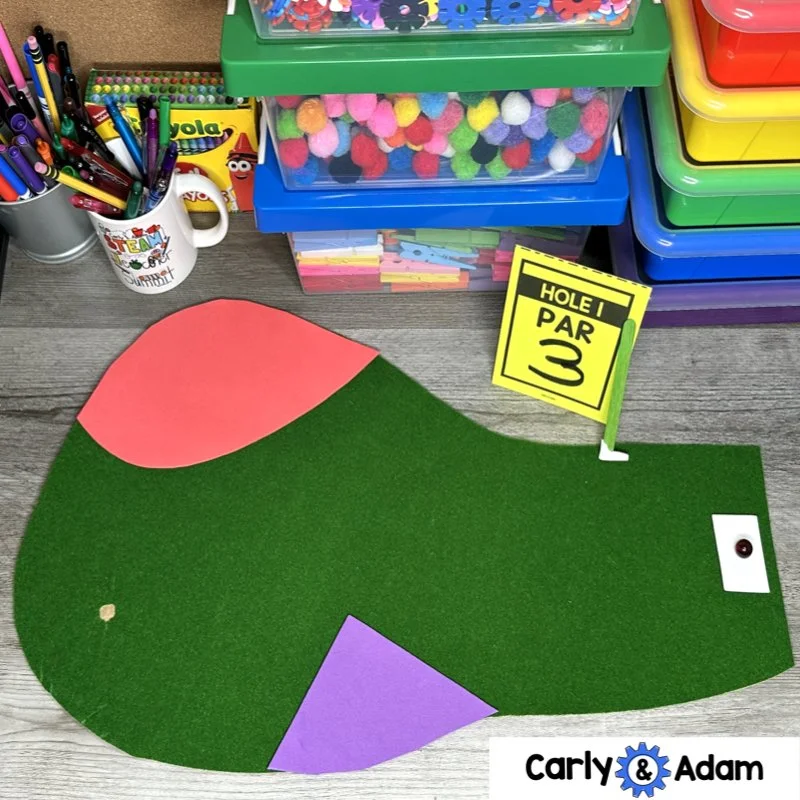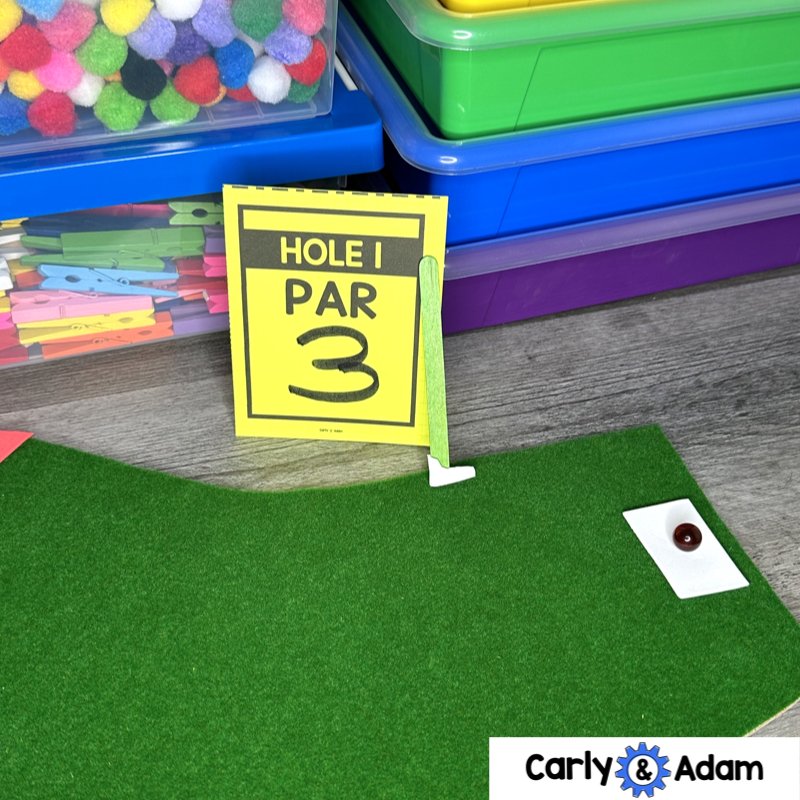Mini Golf STEM Challenge
Get ready for the Summer Olympics with a Golf STEM Challenge!
Welcome to a world where creativity meets engineering and the classroom transforms into a bustling mini golf course, teeming with excitement and imaginative designs! Today, we're diving into an engaging and educational activity that combines a love for golf with the principles of STEM education - the Mini Golf STEM Challenge. This hands-on project is not just a lesson in physics and engineering; it's a passport to innovation, problem-solving, and teamwork.
Introducing the Mini Golf STEM Challenge
The Mini Golf STEM Challenge encourages students to use their creativity as they design and construct a unique mini golf hole using a variety of materials. But there's a twist! Students are encouraged to let their imagination soar, creating obstacles, twists, and turns that challenge their classmates and bring a sense of adventure to the game.
Materials and Instructions
To complete this challenge students can use any consumable materials you have on hand. Here's a list of suggested materials to get you started:
makerspace consumables
glue/tape
artificial grass (optional)
marble
scissors
pencils
Understanding the STEM Concepts Behind the Mini Golf Challenge
As students embark on the Mini Golf STEM Challenge, they are not just participating in a creative task; they are stepping into the shoes of engineers and designers. This journey is as much about the process as it is about the final creation. Here are some key considerations to guide students as they navigate through this exciting challenge:
Shape and Function: Students should think about how the shape of each component of their mini golf hole affects its function. For example, how does the shape of a ramp influence the speed and direction of the golf ball? Encourage students to sketch their designs first, thinking critically about the purpose of each element.
Force and Motion: Understanding the basic principles of force and motion will help students predict how the ball will move through their course. They should consider how different levels of force affect the distance and direction of the ball.
Gravity and Inclines: Gravity plays a vital role in how the golf ball moves. Students should experiment with inclines to learn how gravity can speed up or slow down the ball.
Friction: Different materials create different amounts of friction with the golf ball (marble), affecting how far it rolls. Students should think about how surface materials in their design might impact the movement of the ball.
Ready, Set, Play Golf!
By integrating these scientific and engineering considerations into their designs, students will not only have fun completing the Mini Golf STEM Challenge but also gain a deeper understanding of the underlying principles that make their creations work. This hands-on application of STEM concepts is an invaluable part of the learning process, encouraging critical thinking, creativity, and problem-solving skills.
Imagine transforming your classroom into an engaging mini golf course, where students wield their handmade clubs, navigating their golf balls (marbles) through creative obstacles and intricate designs. Through the Mini Golf STEM Challenge, students actively apply scientific concepts in a fun and interactive setting, fostering a deeper understanding and a collaborative learning atmosphere.
Looking for more Summer Olympics STEM Challenges?
Check out the Summer Games STEM Challenges Bundle, Perfect for Third, Fourth, and Fifth Grade!
Have more questions or need additional resources?
You can get all 500+ STEM Challenges by Carly and Adam as part of the STEM Teachers Club Membership. Save $5 on your first month using coupon Code: CarlyAndAdamBlog.
We hope you have found this blog post helpful. To stay connected with Carly and Adam's teaching tips and classroom freebies be sure to follow us on Facebook, Pinterest, Teachers Pay Teachers, and subscribe to our blog!




